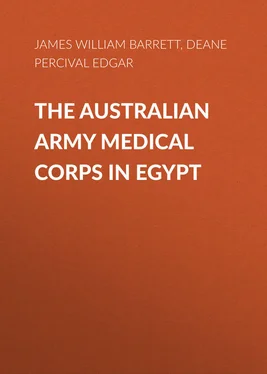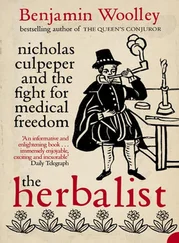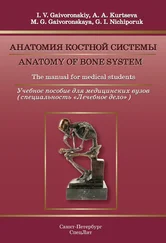Percival Deane - The Australian Army Medical Corps in Egypt
Здесь есть возможность читать онлайн «Percival Deane - The Australian Army Medical Corps in Egypt» — ознакомительный отрывок электронной книги совершенно бесплатно, а после прочтения отрывка купить полную версию. В некоторых случаях можно слушать аудио, скачать через торрент в формате fb2 и присутствует краткое содержание. ISBN: , Жанр: foreign_antique, foreign_prose, на английском языке. Описание произведения, (предисловие) а так же отзывы посетителей доступны на портале библиотеки ЛибКат.
- Название:The Australian Army Medical Corps in Egypt
- Автор:
- Жанр:
- Год:неизвестен
- ISBN:http://www.gutenberg.org/ebooks/41911
- Рейтинг книги:5 / 5. Голосов: 1
-
Избранное:Добавить в избранное
- Отзывы:
-
Ваша оценка:
- 100
- 1
- 2
- 3
- 4
- 5
The Australian Army Medical Corps in Egypt: краткое содержание, описание и аннотация
Предлагаем к чтению аннотацию, описание, краткое содержание или предисловие (зависит от того, что написал сам автор книги «The Australian Army Medical Corps in Egypt»). Если вы не нашли необходимую информацию о книге — напишите в комментариях, мы постараемся отыскать её.
The Australian Army Medical Corps in Egypt — читать онлайн ознакомительный отрывок
Ниже представлен текст книги, разбитый по страницам. Система сохранения места последней прочитанной страницы, позволяет с удобством читать онлайн бесплатно книгу «The Australian Army Medical Corps in Egypt», без необходимости каждый раз заново искать на чём Вы остановились. Поставьте закладку, и сможете в любой момент перейти на страницу, на которой закончили чтение.
Интервал:
Закладка:
The Mena camp had been struck, and the troops sent to the Dardanelles; the First and Second Stationary hospitals had moved to Mudros; and the First Casualty Clearing Station had been transferred to the Dardanelles. Consequently the pressure fell almost entirely on the First General Hospital, and the Venereal Diseases Hospital thus became the only Venereal Diseases Hospital in Egypt.
Close to the Palace Hotel there was a large pleasure resort, known as the Luna Park, at one end of which was a large wooden skating-rink, enclosed by a balcony on four sides. This building was obtained, and was railed off from the rest of Luna Park by a fence 13 feet high. The infectious cases from the camp were then transferred to it. A camp kitchen was built, and an admirable open-air infectious diseases hospital was obtained. It became obvious, however, that the skating-rink, which with the balcony could accommodate, if necessary, 750 patients, might better serve as an overflow hospital in case of emergency, and accordingly efforts were made to obtain another infectious diseases hospital in the vicinity.
Eventually a fine building known as the Race Course Casino, a few hundred yards from the Heliopolis Palace, was obtained and converted into an infectious diseases hospital providing for the accommodation of about 200 patients. With its ample piazzas and excellent ventilation it formed an ideal hospital, and was reluctantly abandoned at a later date owing to the development of structural defects which threatened its stability.
The position, then, at this stage was that the First Australian General Hospital consisted of (1) the Palace Hotel, ever increasing in its accommodation as the furniture was steadily removed and space economised, its magnificent piazzas utilised, and tents erected in the grounds for the accommodation of the staff; of (2) the rink at Luna Park, which was now empty and ready for the reception of light cases overflowing from the Palace; of (3) the Casino next door to Luna Park, which had now become an infectious diseases hospital; and of (4) the Venereal Diseases Hospital at Abbassia, which soon became an independent command though still staffed from No. 1 General Hospital.
At or shortly before this period, however, the authorities had become aware that wounded might be received from the Dardanelles at some future date in considerable numbers, which could not, however, be accurately estimated. Accordingly a consultation was held between Surgeon-General Ford and Surgeon-General Williams (who arrived in Egypt in February), Colonel Sellheim, who was the officer commanding the newly formed Australian Intermediate Base, the O.C. of the First Australian General Hospital, Lieut. – Col. Ramsay Smith, and Lieut. – Col. Barrett. It was decided to authorise the expenditure of a considerable sum of money in making the necessary preparation, on the ground that if the wounded did not arrive the Australian Government would justify this action, and that if the wounded did arrive a reasonable attempt would have been made to meet the difficulty. Instructions were accordingly given to buy up beds, bedding, and equipment, which would inter alia provide at least another 150 beds in the Infectious Diseases Hospital and 750 in the rink. At first iron beds were purchased, but it was impossible to obtain deliveries of iron beds at a rate exceeding 120 a week, and there were (practically) none ready made in Egypt. It was during this period of expansion that the donation of 130 beds made to Lieut. – Col. Ramsay Smith in Adelaide proved to be so useful.
It was, therefore, quite certain that full provision could not be made in time if iron beds were to be used, and accordingly large purchases of palm beds were made. These are very strong, stoutly constructed beds, made of palm wood. They are quite comfortable and last for several months. The drawback is that they are liable ultimately to become vermin-infected and that their sharp projecting struts are very apt to catch the dresses of those who pass by. We were able, however, to obtain them with mattresses at a rate exceeding 100 a day. They were ordered in practically unlimited numbers, so that shortly there was accommodation for the 900 patients referred to. In addition a large reserve of beds and mattresses had been created so that they could be placed in the corridors if it became necessary.
At an earlier date the project of taking the whole of Luna Park and using the upper portion of it, the Pavilion, as well as the lower portion, the Rink, had been under contemplation, but had been rejected on the ground of expense. The rental demanded was high, owing to the fact that the park must perforce be closed as a pleasure resort if used as a hospital.
The conveyance of sick and wounded from Cairo to Heliopolis next engaged attention, and on April 26 it was found possible to run trains from Cairo on the tram-lines to Heliopolis Palace Hotel. A trial run was made about midnight on the 27th. The first train containing sick from Mudros arrived on the evening of the 28th, and on the 29th and 30th without warning the wounded poured into Heliopolis.
As soon as the nature of the engagement at the Dardanelles became known, the D.M.S. Egypt ordered that the whole of Luna Park be taken over and immediately equipped. The pavilion was made ready for the reception of the wounded within a very few hours, and in a few days Luna Park was so equipped with baths, latrines, beds, bedding, etc., that it could accommodate 1,650 patients.
Never before in history were precautions better justified. Had the expenditure not been incurred, had the representative of the Australian Government held up the execution of the policy of preparation by waiting for instructions, a disaster would have occurred, and many wounded would have been treated in tents in the sand of the desert. Yet so strangely constituted is a minor section of humanity that instead of satisfaction being expressed that the best possible had been done, some criticism was levelled at the undertaking on the ground that it was not at the outset technically perfect, and that it showed the initial defects inseparable from rapid improvisation. The Australian people should be profoundly grateful to Surgeon-General Williams and Colonel Sellheim, whose decisive promptitude enabled the position to be saved.
CHAPTER IV
THE RUSH OF WOUNDED AND RAPID EXPANSION OF HOSPITALS – SAVING THE SITUATION – PERIOD OF IMPROVISATION – SHORTAGE OF STAFF AND EQUIPMENT – HOW THE EXPANSION WAS EFFECTED – THE NUMBER OF SICK AND WOUNDED.
During the first ten days of the crisis approximately 16,000 wounded men entered Egypt, of whom the greater number were sent to Cairo, and during those ten days an acute competition ensued between the supply of beds and the influx of patients. Fortunately the supply kept ahead of the demand, the pressure being eased by the immediate provision at Al Hayat, Helouan, of a convalescent hospital capable of accommodating 1,000 and in an emergency even 1,500 patients.
At the end of the ten days referred to, the position was as follows:
Heliopolis Palace Hotel had expanded to 1,000 beds, Luna Park accommodated 1,650 patients, the Casino would accommodate 250, the Convalescent Hospital, Al Hayat, Helouan, was accommodating 700, and if need be could accommodate 1,500 patients, and the Venereal Diseases Hospital could receive 500 patients.
In the meantime No. 2 General Hospital had been transferred to Ghezira Palace Hotel, which was rapidly equipped, and at a later date became capable of receiving as many as 900 patients. Mena House remained an overflow hospital, bearing the same relation to No. 2 General Hospital as the Auxiliary Hospitals at Heliopolis bore to No. 1 General Hospital.
Читать дальшеИнтервал:
Закладка:
Похожие книги на «The Australian Army Medical Corps in Egypt»
Представляем Вашему вниманию похожие книги на «The Australian Army Medical Corps in Egypt» списком для выбора. Мы отобрали схожую по названию и смыслу литературу в надежде предоставить читателям больше вариантов отыскать новые, интересные, ещё непрочитанные произведения.
Обсуждение, отзывы о книге «The Australian Army Medical Corps in Egypt» и просто собственные мнения читателей. Оставьте ваши комментарии, напишите, что Вы думаете о произведении, его смысле или главных героях. Укажите что конкретно понравилось, а что нет, и почему Вы так считаете.












